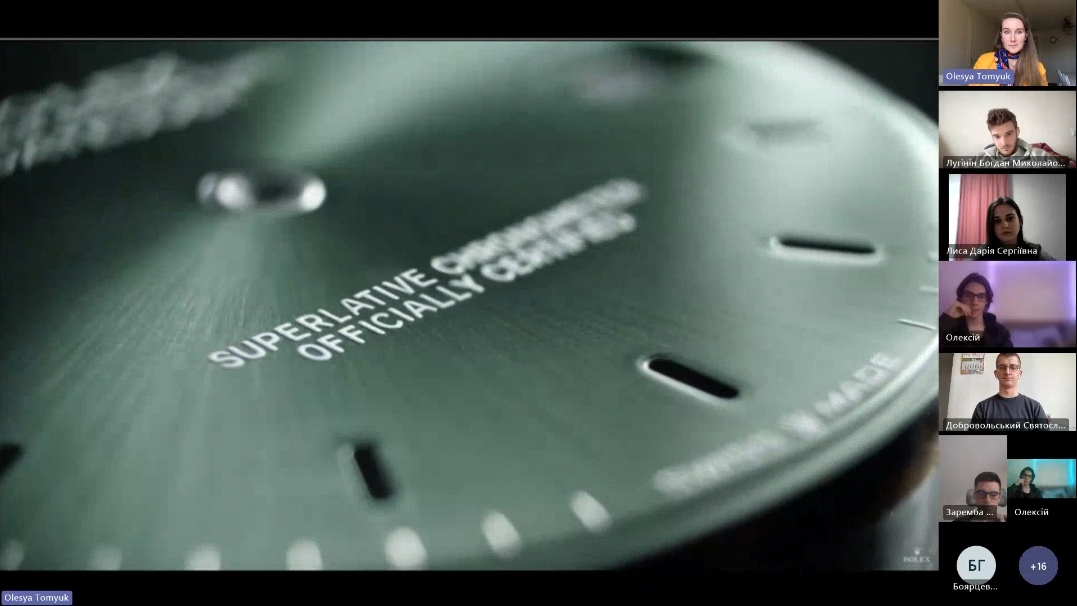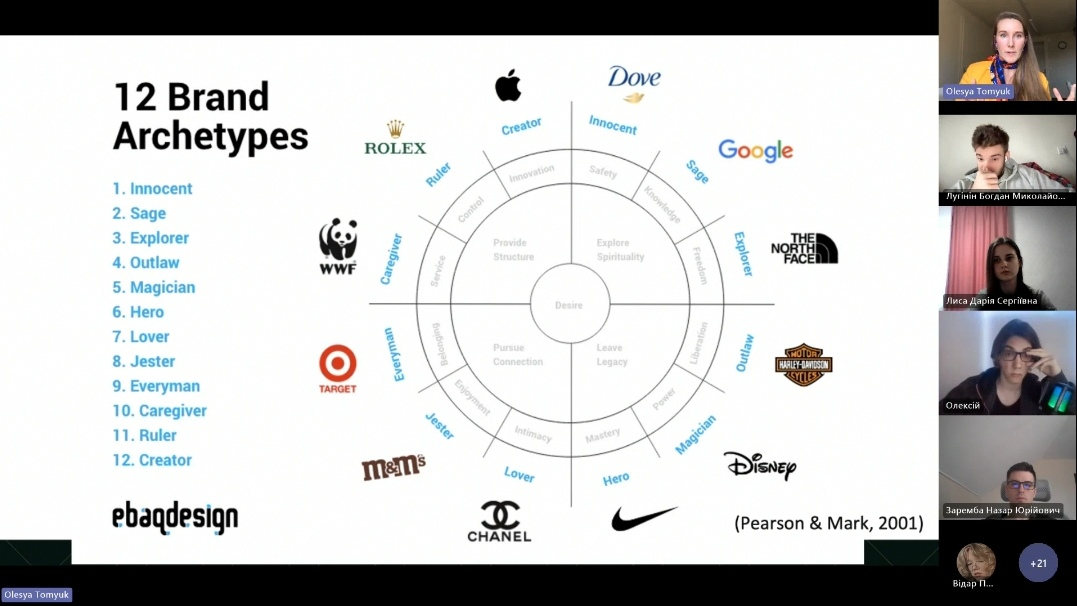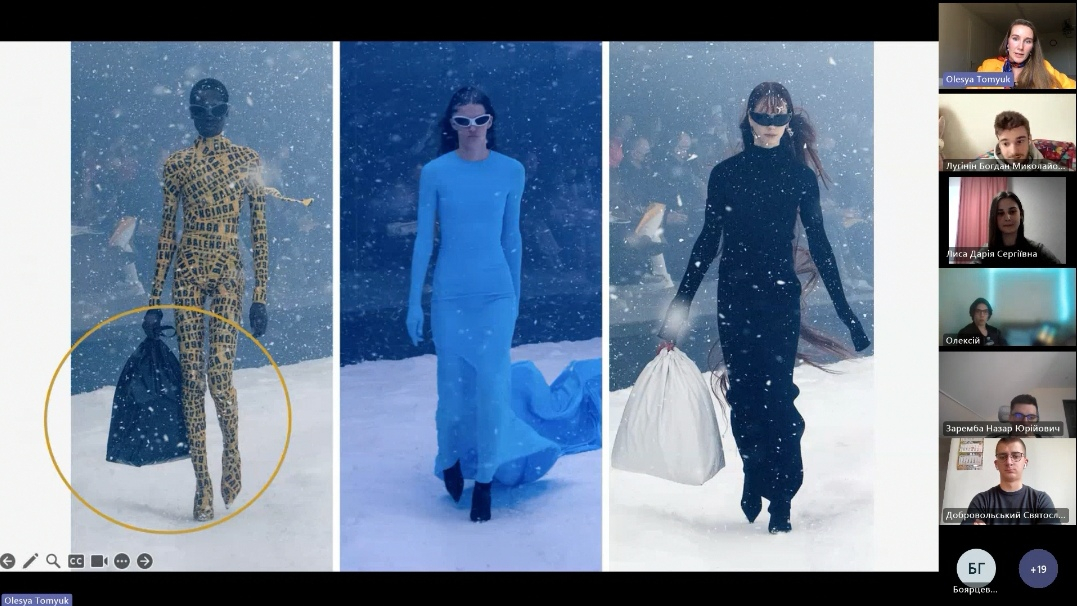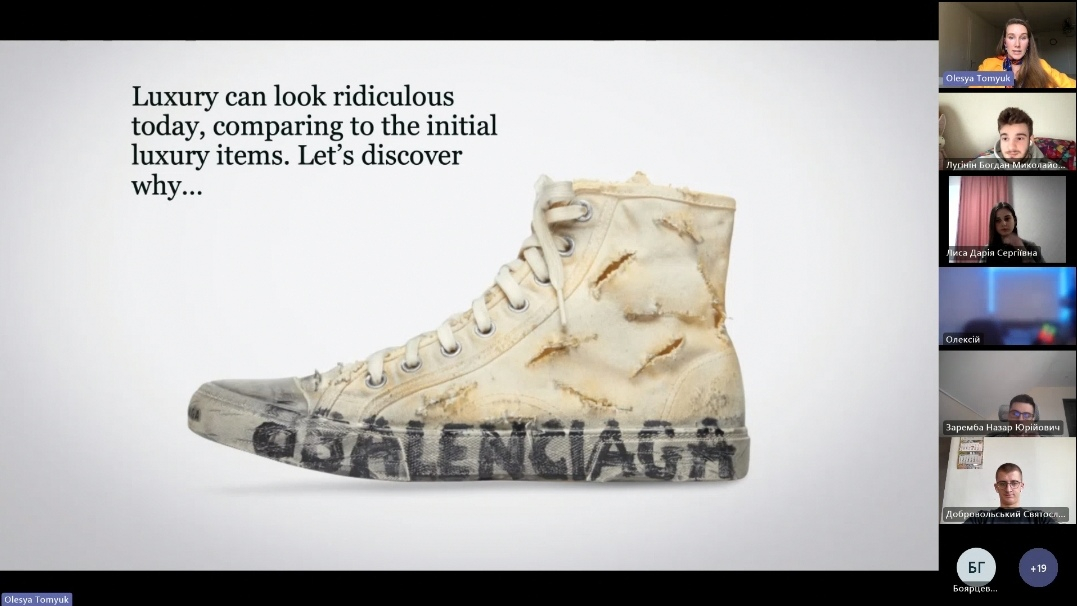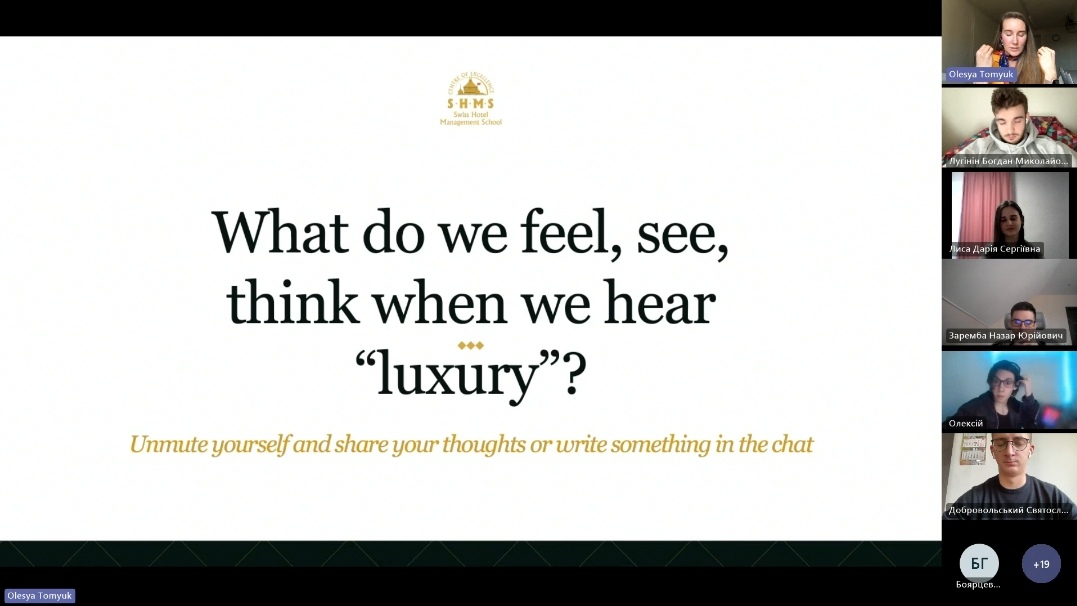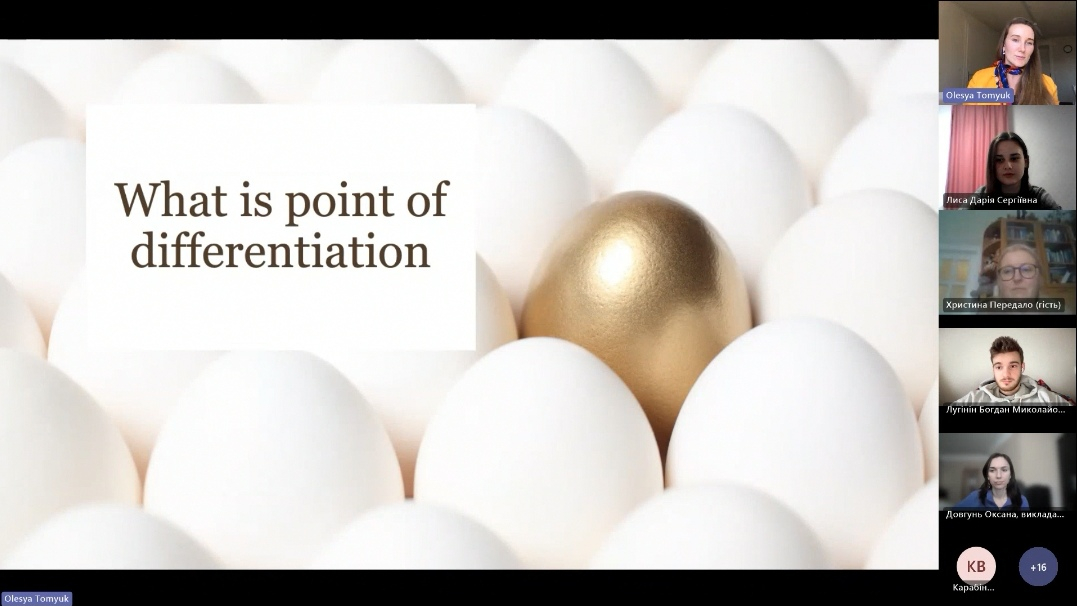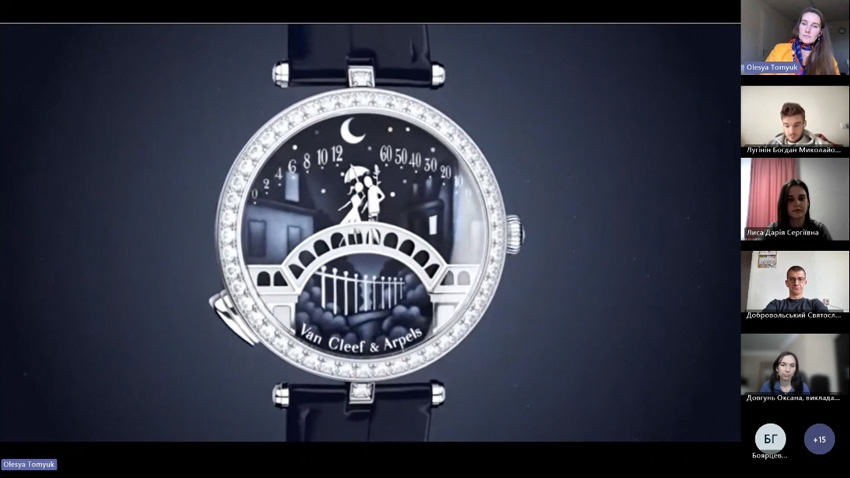Olesya Tomyuk, PhD, Swiss Hotel Management School, explained to students what the brand’s unique value proposition is at an online meeting on March 14. She talked about the peculiarities of advertising luxury brands and presented brand positioning examples of companies – manufacturers of luxury watches.
According to Olesya Tomyuk, the brand emphasizes not so much on the quality, appearance and functionality of the product, but on the emotions it should give to its customers. A brand involves a whole range of emotions and associations that it conveys to the client. A unique value proposition is no longer only about the quality of the product, but about positioning, why I as an individuality should choose this particular product.
She presented students with the advertisements for a variety of luxury and premium watches, which do not differ significantly in quality, and all of them show the exact time. It is not difficult to make a watch today, and it is not difficult to use expensive materials for it, but it is the positioning that sets them apart from the competition.
There are 12 brand archetypes, depending on how it positions itself and how it takes care of the customer:
- innocent (Dove);
- sage (Google);
- explorer (The North Face);
- outlaw (Harley Davidson);
- magician (Disney);
- hero (Nike);
- lover (Chanel);
- jester (M&Ms);
- everyman (IKEA);
- caregiver (WWF);
- ruler (Rolex);
- creator (Apple).
Quiet luxury is a trend that is being talked about more and more often these days. These are expensive things that do not have logos on them. On the one hand, the owners of such things hide their wealth, and on the other hand, they hope that only people with a sharp eye will differentiate their quality item in a crowd. The three main goals of luxury marketing are to build trust, teach the client to love the brand, and set the tone for the culture.
The functioning of luxury is based on six principles:
- The price has no rational explanation;
- Their quality is eternal. A Rolex watch can be passed down from generation to generation;
- Aesthetics;
- Rareness;
- Extraordinaryness;
- Symbolism.
Luxury brands have cult elements. Almost all of them have a creator (Christian Dior, Enzo Ferrari, etc.), a legendary past, mysticism, symbols (logo), moments of unification (fashion shows), and a victim (standing in a queue for a product). Brands build a kind of religion around themselves.
How companies try to sell their product, especially extremely expensive items, is a very interesting process. Olesya Tomyuk’s final lecture on international branding will be held on Thursday, March 21, on the Microsoft Teams platform.
